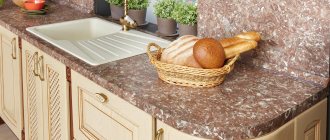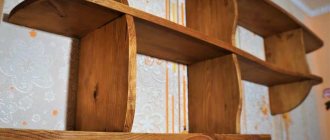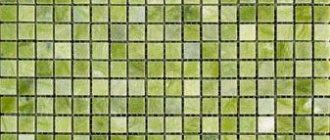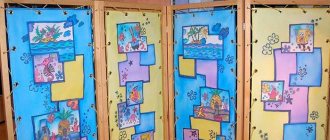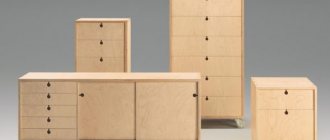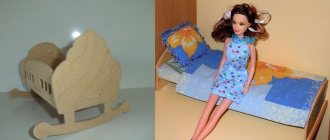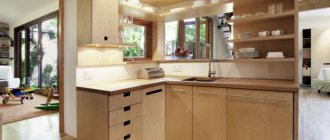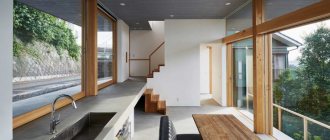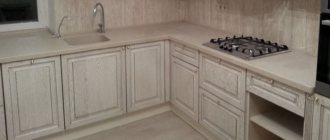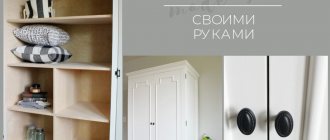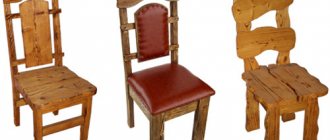Hi all! A beautiful and practical kitchen is the dream of every housewife. At the same time, it is important to achieve optimal performance in all directions. We rightly put practicality first. And the work surface plays one of the key roles. A homemade plywood countertop for the kitchen can be an excellent solution.
Some people are afraid to use this material. In fact, using a laminated and moisture-resistant plywood board, you can create an excellent, as well as practical, surface for cutting and cooking in the kitchen.
Laminated plywood table top
Today we’ll talk about how to make it, what to assemble it from, and what else you need to know before assembly, as well as during finishing.
This method is suitable for those who love wood, or rather its structure, and this material is also relatively environmentally friendly. It completely imitates a wood-look countertop for the kitchen.
Material selection
The first step is to buy blanks in the form of plywood sheets.
Of course, you can simplify your task and purchase a custom-made kitchen, including worktops. But today we are interested in a plywood countertop for the kitchen, assembled with our own hands.
Homemade plywood table top
- Variety
. The optimal choice for the manufacture of such a kitchen element would be first grade Sh2 plywood. They are polished on both sides. Such parts do not have surface defects; - Moisture resistance
. Usually they choose between FC and FSF. The first option is only suitable for interior work. This is a priority for a computer or desk. FSF has much higher moisture resistance. Therefore, it is suitable for assembling kitchen furniture; - Laminated layer
. Highly recommended. However, in the kitchen the material will be exposed to moisture, temperature changes, and chemicals. Lamination makes the product more stable; - Plywood material
. In terms of ease of processing and strength, birch plywood demonstrates good performance. But there are other options; - Thickness
_ To make a tabletop, you should take plywood sheets with a thickness of at least 20 mm. Also, to get a more solid surface, you can connect 2-3 sheets together.
Three layers of plywood
All that remains is to purchase the required amount of materials. Here you have to do the calculations yourself, based on the size of the kitchen. Just remember that the width of a standard size table top is 60 cm.
What are pockets for?
In addition to replacement T-shirts and panties, the baby will need a comb, shoes for dancing and physical education, sportswear, a jacket, tights, and socks. Very little babies need a bib, girls need hairpins and rubber bands. Keeping it all in order without taking up too much space is the main purpose of hanging pockets.
Rules for working with plywood
To make a kitchen plywood countertop of high quality, practical and durable, you need to learn how to work with the material.
Here it is worth highlighting the following basic principles:
- to connect sheets, use moisture-resistant glue and self-tapping screws;
- in order to protect against moisture, each layer can be treated with bitumen mastic;
- make the tabletop only according to the detailed drawing;
- for cutting, it is better to take a jigsaw with a new attachment;
- carefully process and sand all edges;
- when connecting with self-tapping screws, first make holes in the sheets using a drill and a thin drill bit;
- the optimal material for joining sheets is wood glue;
- if the tabletop consists of 2 or more sheets, treat with glue, screw in screws and clamp in clamps;
- the distance between the screws should be about 15 cm;
- open areas of plywood sheets must be treated with sealant and then covered with edges or strips.
Plywood with edge
This is the basic knowledge with which you can get started.
Types of pockets
Hanging sachets are divided into three groups:
- according to the method of fastening;
- by type of department;
- to size.
By mounting method
There are different ways to attach an organizer to a cabinet, each of which has its own pros and cons.
On loops - this is the strongest and most durable type of fastener, it will withstand any weight. The loops are put on hooks or screws. But not everywhere they allow such “desecration” of the kindergarten’s property, that is, you can’t screw anything into the doors.
The product with an elastic band is simply attached to the door and removed for washing. However, under the weight of things, the elastic band stretches and the structure sags.
Adhesive tape, usually with a folded edge. The pocket can be removed and hung in a matter of seconds. Such sachets are also convenient because on the bending part, which remains on the outside of the door, you can applique or embroider with the owner’s name. Or just sew a bright picture. Then the baby will never confuse his locker with the neighbor's.
Double sided tape. Fast and easy, but, alas, the most unreliable method of fastening.
By branch type
The compartments of the children's organizer have several options:
- open pockets:
- on an elastic band;
- with a closing flap (usually fastened with Velcro or a button, less often with a button);
- on a zipper.
Open compartments are good for small items, such as a comb. If the item is large, then in order to avoid unsightly bulging of the pocket and its contents falling out, you should think about a clasp or elastic band.
When choosing a clasp, focus on how easy it will be for your child to open and close it. Velcro and snaps are a great option. If you don’t want to fuss with fasteners, then just run an elastic band along the top of the pocket. A compartment with a zipper will keep small things safe: rubber bands, hairpins and even tiny toys.
And another important detail is the design. Pockets decorated with embroidery or applique with the image of your favorite cartoon character will look beautiful. Personalized accessories are especially popular.
If we talk about size, there are three types:
- large ones - for the entire door;
- medium - from half to three quarters of the surface;
- small ones - take up less than half.
If you want the pockets to serve your child for more than one year, give preference to large or medium ones. As the child grows, the size of the clothes will increase, so over time a small sachet simply won’t fit everything you need.
Tabletop manufacturing procedure
See also
Fronts for hinged cabinets: which ones to choose, where to buy
Assembling a plywood kitchen countertop is quite easy. Of course, if it does not provide for complex shapes, as well as corner structures where two elements need to be connected.
Corner plywood table top
In fact, it is an ordinary rectangular sheet. It is only assembled from one thick sheet, or from 2-3 thinner ones.
The build process can be described as follows:
- draw up a detailed drawing of the future countertop;
- prepare the material, preferably a two-layer type of plywood;
- if there are several sheets, treat them with bitumen mastic to protect them from moisture;
- cut using an electric jigsaw;
- connect the sheets together using self-tapping screws and wood glue;
- if this is a countertop for a sink, then you need to cut a hole according to the template (for more details, see the material on how to embed a sink into a countertop with your own hands);
- treat surfaces with moisture-proof impregnations;
- pay special attention to the ends that will be most exposed to moisture;
- let the workpiece dry completely.
Of course, you must have a base on which the countertop will eventually be installed. You can fix it with corners, glue and screws. Special clamps are used to secure the sink.
Fastening the sink to the countertop using special fasteners
Do not forget that under a plywood sink you need to use silicone sealant, as well as rubber or rubber gaskets that come with the sink. This will prevent moisture from coming into direct contact with the plywood. Consequently, this design will last much longer.
I have already written material about moisture-resistant countertops for the kitchen, look at the link
Let's do handicrafts together
Why do we need pockets for kindergarten? Mothers who have already raised more than one child know that such an accessory is very convenient to use. As practice shows, closets in preschool institutions are not very spacious. All clothes do not fit.
But we put spare panties, panties, socks, pajamas, and shoes there.
To put everything neatly and neatly on shelves, we came up with original fabric pockets. Of course, you can buy ready-made pockets and simply attach them to the cabinet door, but it’s much more pleasant to make such an item yourself.
You and your child can decorate the pockets with various figures, embroidery, appliqués and other designer little things.
The shape of the pockets should be narrow and long. To avoid getting into trouble, first measure the width and height of the door. Be responsible when choosing fabric. It should be elastic and moderately dense.
How and with what to process
See also
DIY computer chair repair at home
In fact, you already have a plywood countertop for your kitchen. But its current appearance is unlikely to please you.
The question is how to finish or process the product.
DIY plywood sanding
If you watch different videos, they offer many options for how to cover the structure. Let's look at the main options.
- Varnish and paint
. Popular solution. The only problem is that such a surface will not be so resistant to damage. You will have to be careful when cutting food on it. And you can’t put a hot pan on either. Nevertheless, the option has a right to life. First you need to coat the surface with a chipboard primer. It should be water-based, not oil-based. And then there are 2 layers of varnish or paint; - Plastic
. Another option is plastic opening. You will need to buy special sheets. Take enough to cover it completely, then glue it on. You may need to use a hairdryer to straighten it; - Tile
. Objectively this is the best option. After moisture-proof treatment and priming of the base, markings are made on the countertop for tiles. Use tile adhesive. You can take both small tiles, mosaics, and large panels. Focus on kitchen design. Use cross stitches to ensure even but minimal seams. Fill these seams with moisture-resistant grout.
Laying tiles on a plywood countertop
With tiles, it is important to create a good contact layer.
There are 3 options available here:
- installing a painting mesh using a stapler;
- laying plasterboard with glue;
- creation of a cement pad.
Base for tiles
If you decide to use a cement pad, then you should wait about 2 days before laying the tile itself. This will allow the base to dry properly.
If you are interested, the website has detailed material on how to make a countertop from ceramic tiles for the kitchen with your own hands.
Decor options
Each cabinet and its hanging pockets are individual. To make the organizer bright, you can use fabric with checkered, striped, polka dots, flowers or stars. If you decide to stick to a plain base for the product, then the finished pockets can be decorated:
- buttons, rhinestones (it is better not to use small parts for safety reasons);
- ribbons and bows, lace;
- applique, stripes, embroidery;
- images of cartoon characters and animals;
- the base can be the same color, the pockets are decorated with a pattern.
The right combination and reasonable selection of decor is important. You should not use many small decorative elements on fabrics with a ready-made pattern. If the base is monochromatic, it can be diversified with a combination of contrasting colors.
Beautiful bows
You can make a beautiful bow from a PVC pipe - give it to a friend or have fun yourself, testing your accuracy. A practical guide can be read here or here.
If you have already tried making furniture, home decoration or other DIY projects from PVC pipes, please share your experience in the comments.
Branch processing
After the pockets are made, you need to decorate them. The easiest way to do this is to stick appliques with fairy-tale characters. It will look beautiful if beautiful embroidery is done on the pockets in advance. The appliqués are attached before the pocket is sewn on.
You might be interested in this: Creating patterns and sewing backpacks according to instructions
Step-by-step instructions for processing pockets are as follows. The lower side edges are folded into a deep fold. This is necessary to give the pockets volume. To make flaps to close the pockets, they are cut in a trapezoid shape and sewn to the base at the wider part. For fastening, it is convenient to use a Velcro-type connection.
Decorated with appliqués
Plastic pipe connections
You can often hear that plastic pipes are construction toys for adults. If you learn how to correctly assemble the parts of this construction set, you can make almost anything!
As already written above, it is generally best to use PVC pipes for crafts. Their price-quality ratio is optimal today.
Plastic pipes can be connected into a detachable or permanent connection, it all depends on your needs. Another option is to heat the pipe in a certain place with a hairdryer and bend it as needed for your design, that is, in fact, do without connections at all.
